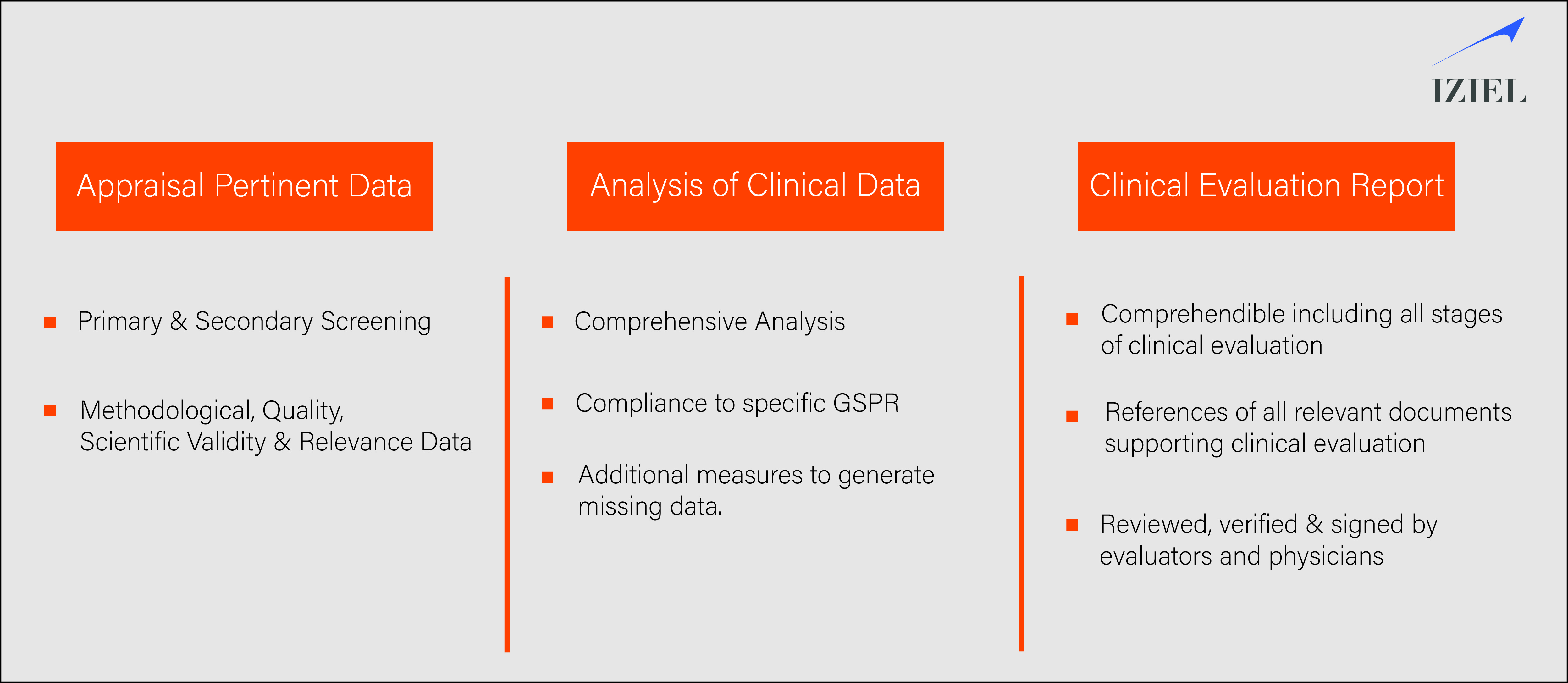Clinical Evaluation Report
Clinical Evaluation Report (CER) makes a strong case for your device and its intended use backed by impactful scientific evidence. The aim of a CER is to reduce the risk that the users and patients are exposed to when using a medical device.
Clinical evaluation is an essential prerequisite for risk management. It justifies the assumptions made in the risk management file, with respect to the benefits and thus the acceptance of a certain risk-benefit ratio.
MEDDEV 2.7/1 Rev 4 of the clinical guidance document was released in June 16 and is aligned more with the European Medical Devices Regulation. The guidelines are more detailed and explicit and help manufacturers to actually conduct systematic clinical evaluations in a more robust manner so as to demonstrate the efficacy, safety & performance of their device.
IZiel provides a unique solution developing Clinical Evaluation Plan (CEP), Clinical Evaluation Report (CER) and thereafter provide the physicians certificate. Our partners have a network of 40+ National Board Certified Physicians that conduct the risk-benefit analysis and provide the necessary certification.
IZiel completes the regulatory part of CER such as product info, PMS, Risk Management etc and our partner works on the clinical aspects such as defining evaluation strategy, literature search, risk/benefit analysis etc and final physician certification.
Clinical Evaluation Report – MDR Compliant

IZiel completes the Clinical Evaluation Report (CER) as per the following changes in revision Med-Dev Rev. 4 with focus on detailing and clarity on every step of the clinical evaluation process that has been conducted by the manufacturers and evaluators.
- Frequent updates: For all devices, every time there is change in the information available on the device based on post-marketing surveillance (PMS) that affects the evaluation or conclusion of the device, the CER needs to be updated. For high-risk devices, CERs need to be updated annually at the minimum, while low-risk and well-established devices can update CERs every 2-5 years.
- Demonstrate scientific accuracy: Greater emphasis has been placed on establishing the scientific validity of the data for each stage of the entire process of clinical evaluation: weighting the data, literature search, retrieval methods, data appraisal, its analysis and weighting it,
- Qualifications of evaluators: A higher education degree and 5 years of professional experience, or 10 years of professional experience where the degree is not a prerequisite has been introduced as a pre-requisite. Deviations from these need to be document justifiably. A declaration of interest for all evaluators is a must as well.
- Measurable objectives for CER: The objectives of the CER must be clearly linked to specific endpoints on the safety, performance and risk-benefit aspects.
- Establishing equivalent: Risks-benefits, safety and performance of the claimed equivalents need to be established in greater detail.
In line with the expectations of the European Authorities, clarity and structure are at the core of everything we do at IZiel. Ensuring thoroughness and scientific accuracy at every step of collating data and presenting it in the CER are our prime objectives, and receiving approval is the clear endpoint for every report we create. EU MDR identifies the use of clinical investigations as a method of assessing the benefit-risk ratio of medical devices. Additionally, risk assessment is useful to justify any foreseeable risks to trial subjects when weighed against the benefits. These should be well-documented in the clinical investigation plan. The plan is also required to include an ongoing monitoring strategy for the risks and the benefit-risk ratio.
Working in-tandem with our clients, we endeavour to provide every detail asked for and more, keeping a keen eye on objectivity, completeness and evidence-backed content, throughout the process.
















